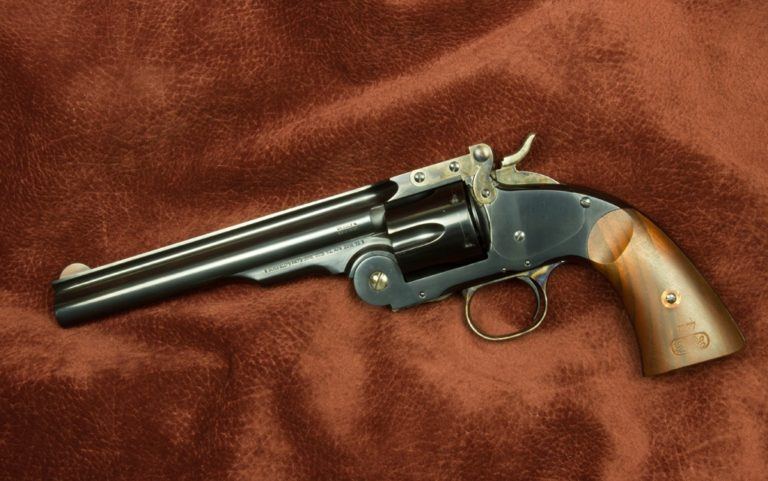
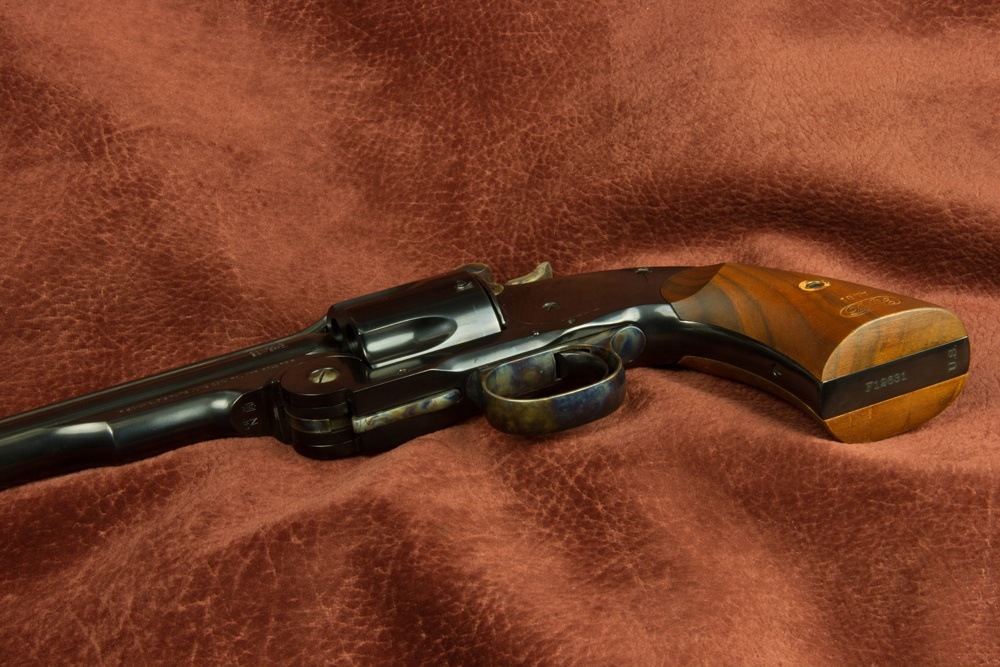
The Uberti 1875 Top Break No. 3 is a working replica of the famous Schofield revolver. It's a faithful rendition and great fun to shoot.
Shooters are fortunate to live now because they have not only modern, state-of-the-art guns to shoot for recreation – and self defense – but also because they have access to guns from the past. Some very old guns that were manufactured over 100 years ago are still working and being used today for hunting and to protect the homestead, but they are not common. Use and neglect over the years eventually wears them out.
Those who know and shoot the old guns have an enjoyment of the shooting sports that others sadly miss. Shooting them slows the pace and creates an appreciation of the workmanship and old technology inherent in the vintage pieces. And shooting them gives the shooter an insight into the challenges faced by those of the past who used those guns – guns that were modern in their day – for serious pursuits like putting meat on the table or protecting themselves and loved ones from evil-doers.
Not everyone has access to a real antique, but some companies like A. Uberti of Italy make working replicas of the old guns that are very nearly identical to the originals. Much of the demand for these guns comes from participants in Single Action Shooting Society matches, but a great number are sold to people who appreciate the old designs and want to experience shooting them.
Made with modern equipment, Uberti’s 1875 Top Break No. 3 2nd Model is very close to the original Schofield revolver from the mid-1870s. The most notable feature of the No. 3 is the top break design that permitted the simultaneous ejection of all fired cases from the cylinder. When the latch was manipulated and the barrel and cylinder pivoted away from the frame and grip, the ejector was activated.
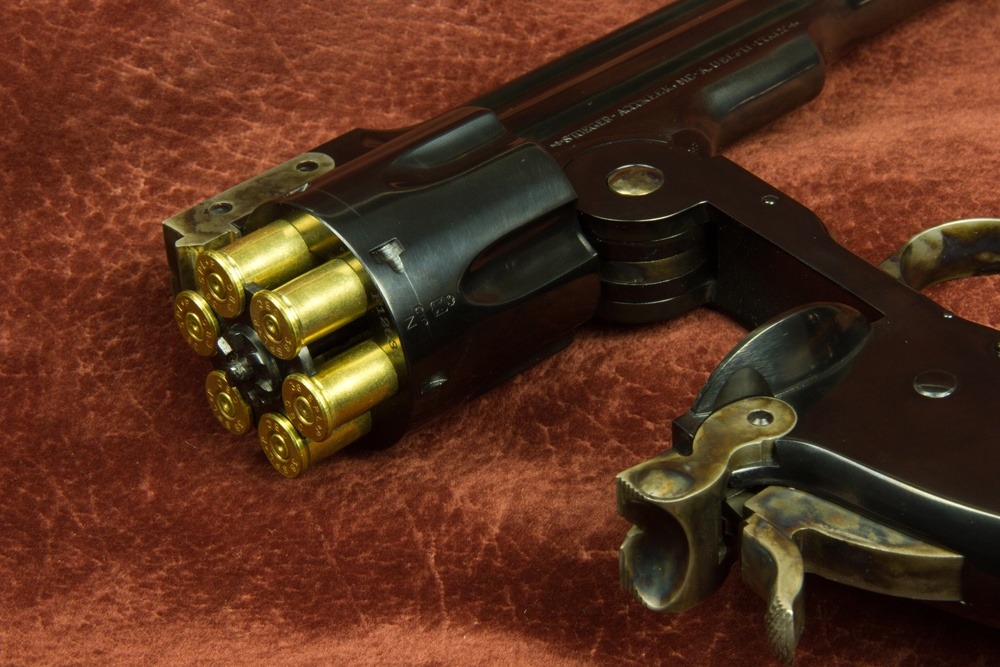
All the cases being ejected at the same time with one motion made reloading under stress faster than with a Single Action Army. Hopeful for a government contract, Smith & Wesson submitted the No. 3 to the Army Ordnance Board for testing, and while the board liked it, a centerfire version was requested to replace the original .44 Henry rimfire chambering. So S&W offered the gun in .44/100, which eventually became known as the .44 American, as well as .44 Henry.
Eventually, Major George Schofield, serving with the 10th Cavalry in Kansas, learned of the No. 3 and became S&W’s sales agent for Colorado and Kansas. He then later made some design changes and was granted patents that included a different latch and an improved extraction system.

The original latch was pushed up to operate, which is very difficult to do with one hand while holding the gun and riding a horse. Schofield’s latch was pulled backwards and down, requiring only one hand, making it easier for a mounted trooper to operate. Even though the Army adopted the Colt Single Action Army (SAA) in .45 Colt instead, Schofield kept pushing the Army to try his Schofield design and finally persuaded it to buy 3,000. Other purchases followed that initial one, but the SAA was still the main service handgun.
Two versions of the Schofield were made, the 1st and 2nd models. There were some minor mechanical differences, but the main difference was that the latch on the 1st model had a smooth top surface and, on the 2nd, had a knurled one for better purchase.
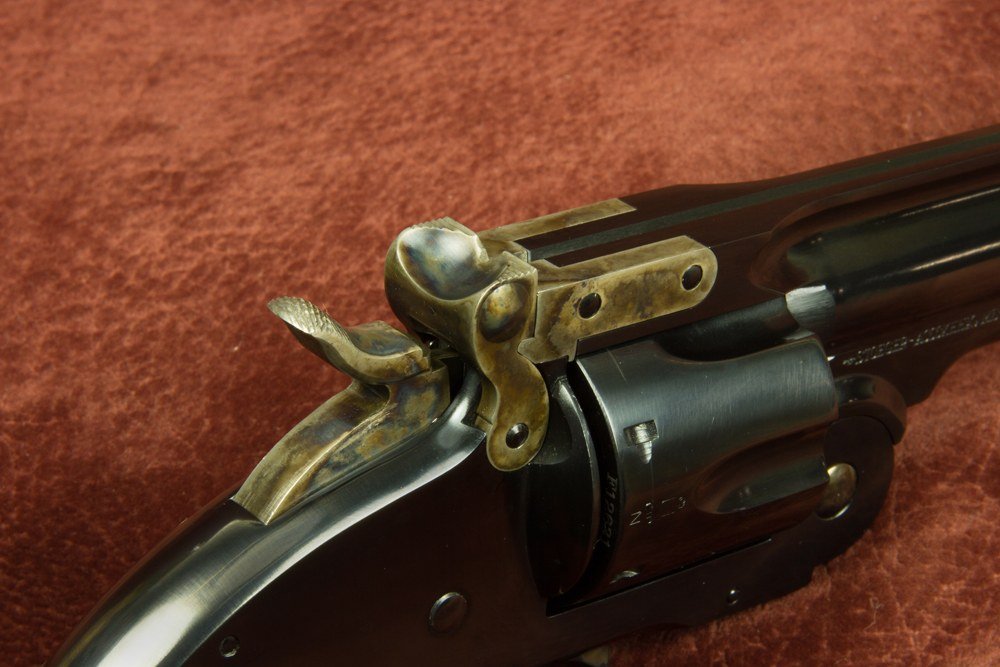
The Schofield required a different cartridge than the SAA due to the length of the cylinder chambers and the extraction method. So the Army approved what was essentially a modified .45 Colt cartridge for the Schofield and called it the .45 S&W Schofield. Both rounds could be fired in the SAA, but the .45 Colt could not be fired in the Schofield. This is probably what caused the Schofield to eventually be set aside by the Army in favor of the SAA.
By 1880, the Schofields were declared surplus by the Army and were sold to the civilian market. Wells, Fargo & Company bought many of them and shortened the 7-inch barrels to 5 inches. Many individuals also carried Model No. 3s, making them very popular in the Old West, and several notables, including Jesse James and Buffalo Bill, carried them.
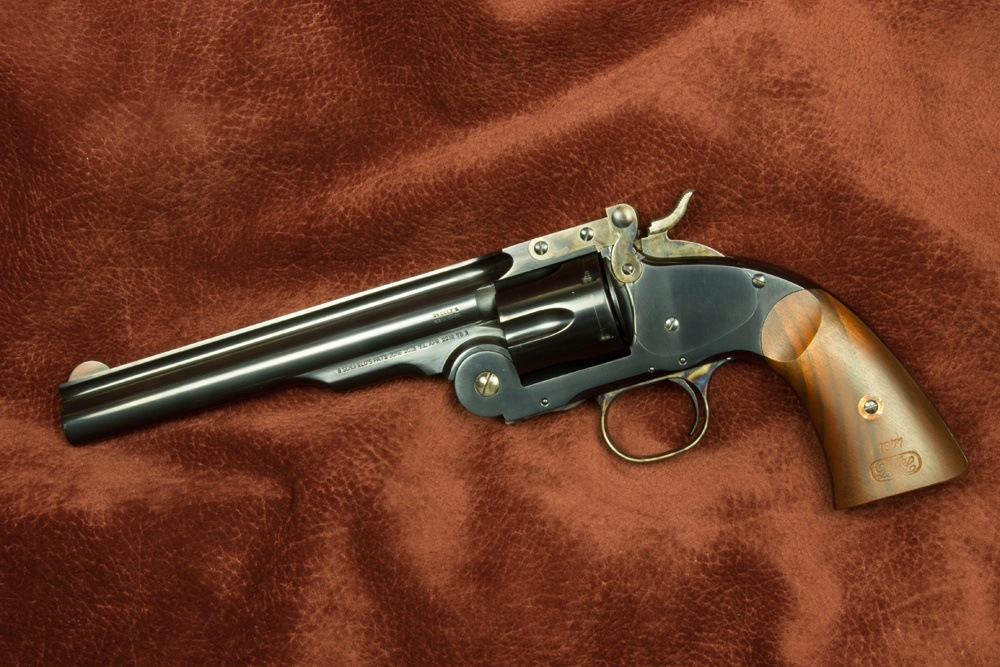
The sample 1875 Top Break No. 3 is closest in design to the 2nd model Schofield because of the serrated latch. The barrel, cylinder and frame are very nicely finished in a lustrous blue, and the hammer, trigger guard, ejector lever and latch are nicely color case hardened with good amber, brown and blue coloring in interesting patterns.
The front blade sight, which is pinned to the barrel, appears to be made of brass. The rear sight is a V notch cut into the top of the latch, and while not easily acquired by today’s standards, the sights did work and were regulated to the point of impact. Glare off the front and rear sight may cause some difficulty in aiming if the light source is in the right – or wrong – place. The gun has a 7-inch barrel, but various barrel lengths are available depending on the model selected.

The hammer has a broad spur that is checkered after a fashion but provides a slip-resistant surface for cocking. There are four hammer positions. After pulling the trigger, the hammer is all the way forward at rest with the integral firing pin protruding from the breech face. Pulling the hammer back to the first click withdraws the firing pin, but the cylinder remains locked. Another click back unlocks the cylinder so that it rotates freely. In either one of the first two partially cocked positions, the latch can be activated and the barrel and cylinder rotated down to eject the shells. The fully cocked hammer position is all the way back and is self-explanatory.
 When the latch is pulled backwards and down, the barrel and cylinder pivot down, and at the same time, the ejector is raised away from the cylinder, ejecting the cartridges. Continuing to rotate the barrel down allows the ejector to snap back into the cylinder, allowing fresh cartridges to be inserted. Once loaded, the barrel can be pushed up and locked into place. When doing so, the shooter must pay attention that, for safety reasons, an empty chamber rests and is locked in place beneath the hammer. That may require cocking the hammer and while restraining it, allowing it to go forward on an empty chamber.
When the latch is pulled backwards and down, the barrel and cylinder pivot down, and at the same time, the ejector is raised away from the cylinder, ejecting the cartridges. Continuing to rotate the barrel down allows the ejector to snap back into the cylinder, allowing fresh cartridges to be inserted. Once loaded, the barrel can be pushed up and locked into place. When doing so, the shooter must pay attention that, for safety reasons, an empty chamber rests and is locked in place beneath the hammer. That may require cocking the hammer and while restraining it, allowing it to go forward on an empty chamber.
 The walnut grip panels, or stocks, on the test gun were nicely executed with a dull, oil type finish, which afforded a solid grip while shooting. The trigger broke cleanly at a little more than 4 pounds after some slight creep. The fluted cylinder held six rounds of .38 Special, but the gun is also available in .45 Colt, .44 Russian and .44-40.
The walnut grip panels, or stocks, on the test gun were nicely executed with a dull, oil type finish, which afforded a solid grip while shooting. The trigger broke cleanly at a little more than 4 pounds after some slight creep. The fluted cylinder held six rounds of .38 Special, but the gun is also available in .45 Colt, .44 Russian and .44-40.
The S&W Model No. 3 was the first American made large-frame revolver built specifically to shoot self-contained metallic cartridge ammunition. It has a rich history despite the small production numbers, and shooting a replica brings to mind a time when things moved more slowly and self-reliance was more highly valued.
For more information, visit Uberti.com or contact Stoeger Industries at 800-264-4962.
Specifications:
 Uberti 1875 Top Break No. 3
Uberti 1875 Top Break No. 3
Caliber: .38 Special
Barrel Length: 7 in.
Overall Length: 12.5 in.
Weight: 3 lbs.
Stock/Grip: Walnut
Sights: Fixed rear notch and front blade
Action: Single action, break open
Finish: Blued
Capacity: 6
Price: $1,079
Editor's Note: This article is an excerpt from the January 2017 issue of Gun Digest the Magazine.

Next Step: Get your FREE Printable Target Pack
Enhance your shooting precision with our 62 MOA Targets, perfect for rifles and handguns. Crafted in collaboration with Storm Tactical for accuracy and versatility.
Subscribe to the Gun Digest email newsletter and get your downloadable target pack sent straight to your inbox. Stay updated with the latest firearms info in the industry.

![Best Concealed Carry Guns In 2025 [Field Tested] Wilson Combat EDC X9S 1](https://gundigest.com/wp-content/uploads/Wilson-Combat-EDC-X9S-1-324x160.jpg)


![Best 9mm Carbine: Affordable PCCs [Tested] Ruger Carbine Shooting](https://gundigest.com/wp-content/uploads/Ruger-Carbine-Shooting-100x70.jpg)
![Best AR-15: Top Options Available Today [Field Tested] Harrington and Richardson PSA XM177E2 feature](https://gundigest.com/wp-content/uploads/Harrington-and-Richardson-PSA-XM177E2-feature-100x70.jpg)

I bought a Schofield, 7 inch barrel in .44-40 from Navy Arms when they were first brought in. A very beautiful revolver in very high quality. The only problem was an excessive cylinder gap-to-barrel, causing spitting of lead. I contacted the late Val Forgett, Navy Arms president about the issue. He had me ship it to his attention at their expense, and a week later, I received a full replacement that is perfect in any way! Though I don’t shoot it a lot, I appreciate the aesthetics and the way everything works. Even with my 75 year old eyes, I can keep most shots at 30 feet in 3 inches! I LOVE this reproduction revolver!
Starline supplies 45 Schofield brass. Why is this gun not made for the original cartridge? If they made it, I’d buy one, but not until then.